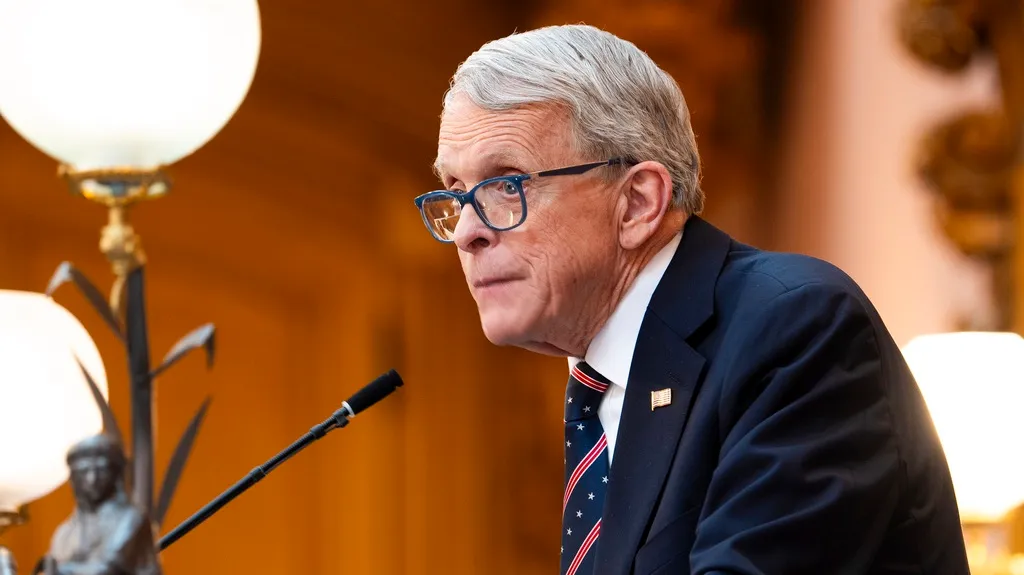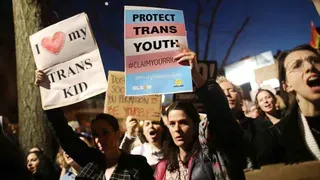June 29, 2012
The AIDS Memorial Quilt Returns to DC (This Time With an App)
Troy Petenbrink READ TIME: 4 MIN.
While organizing an annual candlelight memorial in 1985 for Harvey Milk, activist Cleve Jones invited participants to carry placards with the names of friends and loved ones that they had lost to AIDS. At the end of the memorial, Jones and others taped these placards to the walls of the San Francisco Federal Building. As he looked at the wall of names, an idea was born.
"There were thousands of people standing there, almost silent. I walked with the crowd, and I could hear people whispering and looking at the names and reading them and saying: 'I didn't know he died; when did he get sick?" Jones recounted during an interview with PBS' Frontline.
"I was just overwhelmed by the need to find a way to grieve together for our loved ones who had died so horribly, and also to try to find the weapon that would break through the stupidity and the bigotry and all of the cruel indifference that even today hampers our response. I got to the edge of the crowd, and I looked back at that patchwork of names on the wall, and I thought, it looks like a quilt."
Thinking that it was a perfect, comforting, middle-class symbol to attach to a disease that was killing gays, IV drug users and Haitian immigrants, Jones made the move to apply those traditional family values to his family of PWLHAs.
A little more than a year later, Jones made a simple 3 foot x 6 foot quilt panel in memory of his friend Marvin Feldman. That first panel became the foundation for the AIDS Memorial Quilt.
On October 11, 1987, the Quilt was displayed for the first time on the National Mall in Washington, D.C., during the National March on Washington for Lesbian and Gay Rights. It covered a space larger than a football field and included 1,920 panels. Half a million people visited the Quilt that weekend.
The Quilt returned to Washington, D.C. in 1988, 1989, 1992 and 1996. Each time, the Quilt, like the AIDS epidemic, had grown.
After 25 Years, Refocusing on How to End AIDS
"The AIDS Memorial Quilt has incredible power to draw people into a conversation about HIV/AIDS," said Julie Rhoad, president and CEO of The NAMES Project, the non-profit organization that maintains and displays the Quilt. "With the help of our partner POZ [magazine], we will use this summer's Quilt display to reignite the conversation about how we begin to end AIDS."
Beginning today, the entire Quilt, commemorating its 25th anniversary, returns to D.C. for a month-long series of displays throughout the nation's capital. This visit, a total of 48,000 panels commemorating more than 91,000 names will be shown.
Through July 8, as part of the Smithsonian Folklife Festival, 8,000 Quilt panels (800 different panels per day) will be on display during the course of the 10-day festival for the "Creativity and Crisis: Unfolding The AIDS Memorial Quilt" exhibit.
To coincide with the XIX International AIDS Conference also taking place in D.C., an additional 4,800 Quilt panels will be featured July 21-25 in more than 50 venues throughout the capital region such as National Stadium and the Kennedy Center.
The remaining, 35,200 panels (8,800 different panels per day) will be on display, also July 21 to 25, on a portion of the National Mall, from 8th Street to 14th Street.
As part of a special fundraiser, a section of the Quilt will be displayed at National Park Stadium on July 7, when the Washington Nationals will play the Colorado Rockies. For each ticket purchased, the Nationals will make a donation of support to The AIDS Memorial Quilt and Whitman-Walker Health.
Taking the Quilt High-Tech
As part of its ongoing efforts to archive the Quilt, the NAMES Project Foundation has launched a mobile web app called "AIDS Quilt Touch" that enables people to search for a specific name on a panel and view an image of the panel. Users will also be able to pinpoint the location of a specific plan while it is on display and contribute comments to a digital guestbook.
At the Folklife Festival, and when the Quilt is displayed on the National Mall, visitors will have the opportunity to use a large tabletop surfaces created by Microsoft to interact with the Quilt. A second tabletop will provide an interactive timeline of the 30-year history of HIV.
According to Anne Balsamo, the aim of the new technology is not to replace or interfere with the experience of viewing the textile Quilt, but to augment that experience and to extend the opportunity to interact with the Quilt to people all over the world through on-line access.
"It has been a transformative experience," said Balsamo, a professor in Interactive Media and Communication at the University of Southern California, who has been leading the development of the Quilt's interactive technologies.
For more details on the displays of the AIDS Memorial Quilts in Washington, D.C., visit www.aidsquilt.org. In addition, a temporary store and information center will be located in downtown D.C. at 1030 17th Street, NW, from June 27 through the end of July.
To make a donation to support the ongoing development of the AIDS Quilt Touch app, visit www.indiegogo.com/AIDSquilttouch
Troy Petenbrink resides in Washington, DC and is a member of the North American Travel Journalists Association. You can follow him on Twitter: http://twitter.com/thegaytraveler







